Samasgaṛh slab with an inscription dated saṃvat 1288
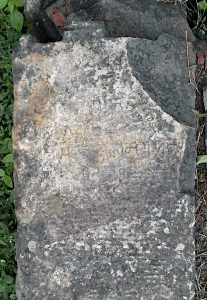
Samasgaṛh (Dist. Bhopāl). Slab with an inscription dated VS 1288. (Courtesy ZENODO).
Two Prakrit poems in praise of Kūrma from Dhār
Pending preparation of diplomatic and critical editions, a working transcription is given here (13 November 2025).
Slab with two Prakrit poems in praise of Kūrma at Dhār
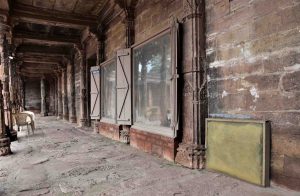
Dhār (Madhya Pradesh). Interior of the east wall of the Kamāl Maula showing the three inscriptions found in the miḥrāb now mounted in glazed frames.
Slab with a Prakrit poetic fragment at Dhār with a eulogy to Bhoja

Dhār धार دهار (Madhya Pradesh). Interior of the east wall of the Kamāl Maula showing inscriptions, the record registered here in a frame to the right.
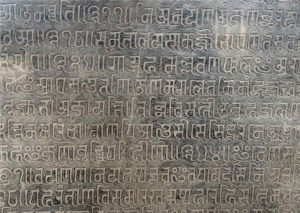
Dhār धार دهار (Madhya Pradesh). Detail of the fragmentary Prakrit inscription in the Kamāl Maula (Courtesy ZENODO).
Prakrit poetic fragment from Dhār with a eulogy to Bhoja
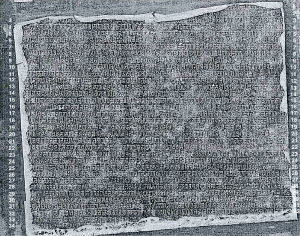
Dhār (Dist. Dhār). Prakrit Inscription (IN060009) praising Bhoja and the Paramāra lineage, estampage. (Courtesy: Tripathi et al, ASI report 2024 and ZENODO).
Udaypur tri-lingual stepwell inscription dated 1645 CE
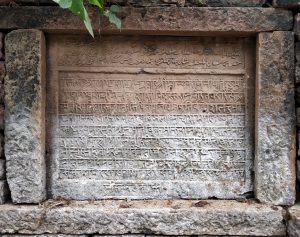
Udaypur (Madhya Pradesh). Stepwell inscription in Arabic, Persian and Sanskrit.
On a stone slab affixed into the right side wall of a stepwell known as Qanungo Baoli, located on the eastern outskirts of Udaypur, Vidisha District, Madhya Pradesh. A tri-lingual inscription of 13 lines carved in relief with the first three lines written in Arabic and Persian in nastaʿlīq script, and the next ten lines written in Sanskrit in nāgarī script. It records the construction of the stepwell by Gokuladāsa and Dāmodaradāsa, sons of Qānungo Haridāsa of Māthura kāyastha family, during the reign of Mughal emperor Shāhjahān (r. 1628-58). The date is given in three different eras—vikrama saṃvat 1701, śaka 1566 and hijri 1054—equivalent to Friday, 13 January, 1645 CE.
Dhār stone slab of with the Rāüla vela of Roḍa
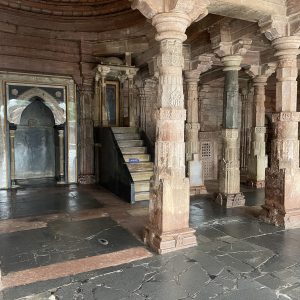
Dhār धार دهار (Madhya Pradesh). Interior of the Kamāl Maula Masjid showing minbar, find spot of the Rāüla vela of Roḍa (Courtesy Wikimedia).
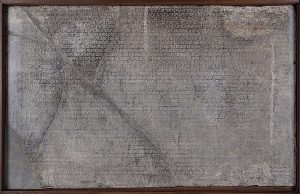
Dhār (Madhya Pradesh). Stone slab with the Rāüla vela of Roḍa, now in CSMVS Mumbai (Courtesy: ZENODO).
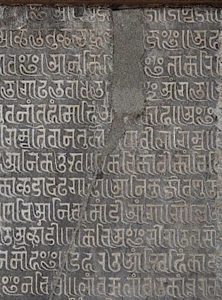
Dhār (Madhya Pradesh). Detail of the inscription after conservation at CSMVS (Courtesy: ZENODO).
Dhar Inscription with verses from the Qur’an
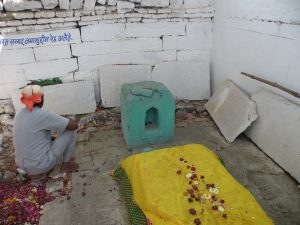
Dhār (Madhya Pradesh). Slabs in precinct of the tomb of Kamāl al-Dīn.
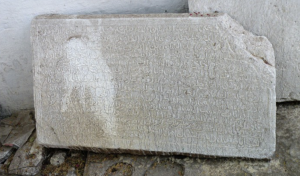
Inscribed slab with verses from the Qur’ān.
Dhar Inscription of Dilawar Khan dated AH 795
Dhār Inscription of Dilāwar Khān dated AH 795.
Singhpur stepwell with an inscription of VS 1535/1479 CE
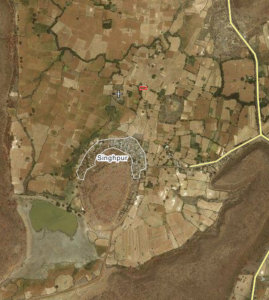
Singhpur (Ashoknagar अशोकनगर). Rājmatī stepwell (Wikimapia).

Singhpur stepwell inscription of VS 1535 (© Saarthak Singh).
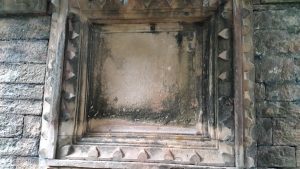
Singhpur stepwell, damaged companion inscription (© Saarthak Singh).
Singhpur (Ashoknagar). Stepwell with inscriptions in mixed Sanskrit recording the construction of the stepwell by Rājamatī in VS 1535.